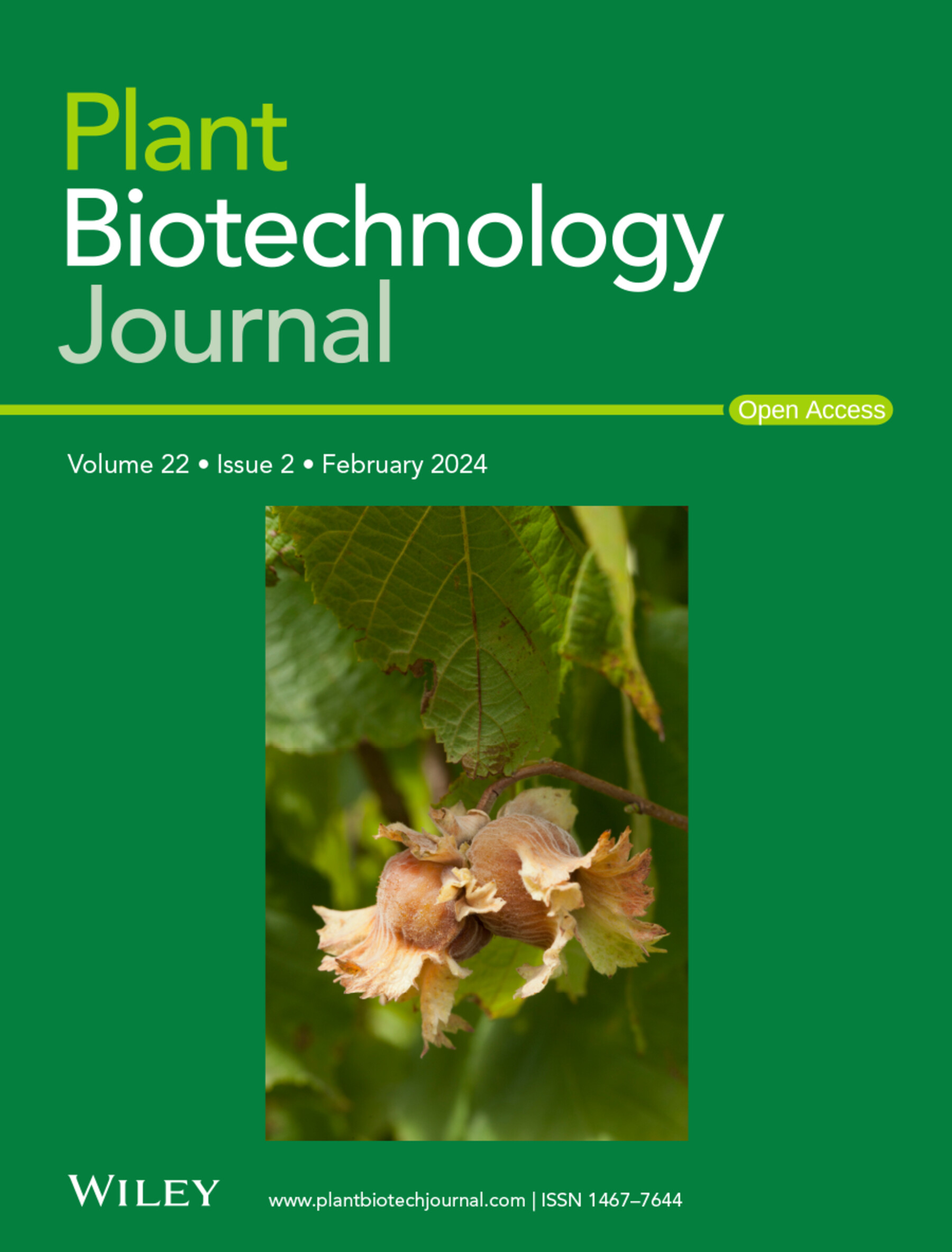利用泥盆石斛基因组和单细胞时间转录组分析花发育动态
IF 10.1
1区 生物学
Q1 BIOTECHNOLOGY & APPLIED MICROBIOLOGY
引用次数: 0
摘要
铁皮石斛(Dendrobium devonianum)是兰科植物,因其独特的花朵特征而闻名,包括唇瓣上的两个黄色斑点和紫色尖端,以及流苏状边缘。然而,人们对D. devonianum花型形成的分子机制仍然知之甚少,这阻碍了其育种过程的进展。本文首次展示了 D. devonianum 的染色体级基因组,揭示了两个重要的多倍体化事件。此外,还构建了一个高分辨率的单细胞转录组图谱,捕获了 11 个不同的细胞群。通过时间和空间大容量 RNA-Seq 鉴定了 MADS-box 基因的表达模式,发现其与花形成的 ABCDE 模型一致。同时,质谱成像和 scRNA 分析表明,黄色斑点主要与类胡萝卜素生物合成基因的表达有关,而紫色则主要与花青素生物合成基因的表达有关。这些基因主要在表皮和维管细胞中表达。表皮细胞的发育轨迹分析进一步揭示了一个基因调控网络和几个可能负责唇瓣边缘流苏形成的转录因子。这项研究对驱动D. devonianum花色分化和结构特征的分子机制提供了宝贵的见解,有助于加深对兰花进化、多样化和育种的理解。本文章由计算机程序翻译,如有差异,请以英文原文为准。
Resolving floral development dynamics using genome and single-cell temporal transcriptome of Dendrobium devonianum
Dendrobium devonianum, a species of the Orchidaceae family, is notable for its unique floral characteristics, which include two yellow spots and purple tips on its labellum, as well as fringed edges. However, the molecular mechanisms underlying flower pattern formation in D. devonianum remain poorly understood, hindering advancements in its breeding process. Here, a chromosome-scale genome of D. devonianum was presented for the first time, revealing two significant polyploidization events. Additionally, a high-resolution single-cell transcriptomic atlas was constructed, capturing 11 distinct cell clusters. Expression patterns of MADS-box genes were identified through temporal and spatial bulk RNA-Seq, revealing alignment with the ABCDE model of flower formation. Meanwhile, mass spectrometry imaging and scRNA analyses showed that the yellow spots were primarily associated with carotenoid biosynthesis gene expression, while the purple colour is predominantly linked to anthocyanin biosynthesis gene expression. These genes were mainly expressed in the epidermis and vascular cells. Developmental trajectory analyses of epidermal cells further uncovered a gene regulatory network and several transcription factors likely responsible for fringes formation along the labellum margin. This study provides valuable insights into the molecular mechanisms driving floral colour differentiation and structural traits in D. devonianum, contributing to a deeper understanding of orchid evolution, diversification and breeding.
求助全文
通过发布文献求助,成功后即可免费获取论文全文。
去求助
来源期刊

Plant Biotechnology Journal
生物-生物工程与应用微生物
CiteScore
20.50
自引率
2.90%
发文量
201
审稿时长
1 months
期刊介绍:
Plant Biotechnology Journal aspires to publish original research and insightful reviews of high impact, authored by prominent researchers in applied plant science. The journal places a special emphasis on molecular plant sciences and their practical applications through plant biotechnology. Our goal is to establish a platform for showcasing significant advances in the field, encompassing curiosity-driven studies with potential applications, strategic research in plant biotechnology, scientific analysis of crucial issues for the beneficial utilization of plant sciences, and assessments of the performance of plant biotechnology products in practical applications.
 求助内容:
求助内容: 应助结果提醒方式:
应助结果提醒方式:


